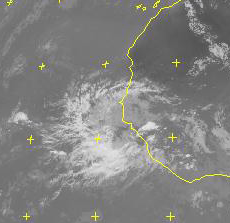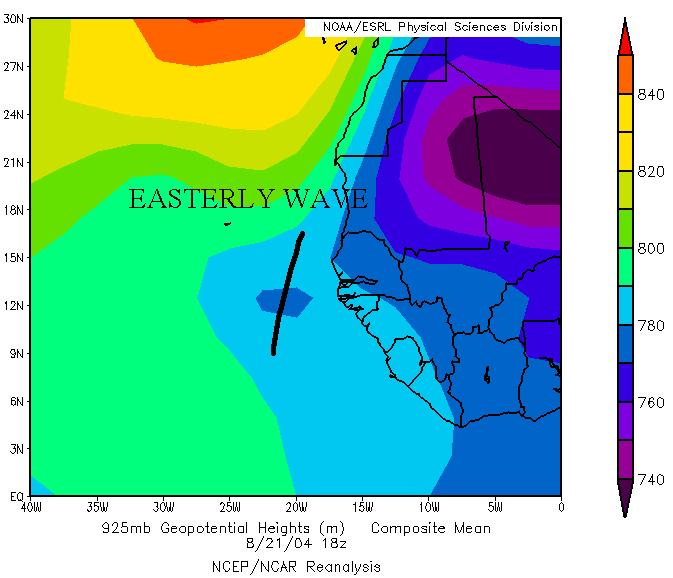from the west coast of Africa. The infrared satellite image to the right shows a healthy area of showers
and thunderstorms just off the coast which served
as the seedling circulation for what would later
become Hurricane Frances. Even at this early
stage, there was already a closed height contour
at 925 mb, depicting an area of low pressure, as
seen in the image below. There are signs that the storm was already showing some organization, by
the cyclonic curvature to the clouds and the upper level outflow. Frances was off to a well developed start, but there are certainly many more things that
go into the formation of a strong storm which I'll
delve into next.


